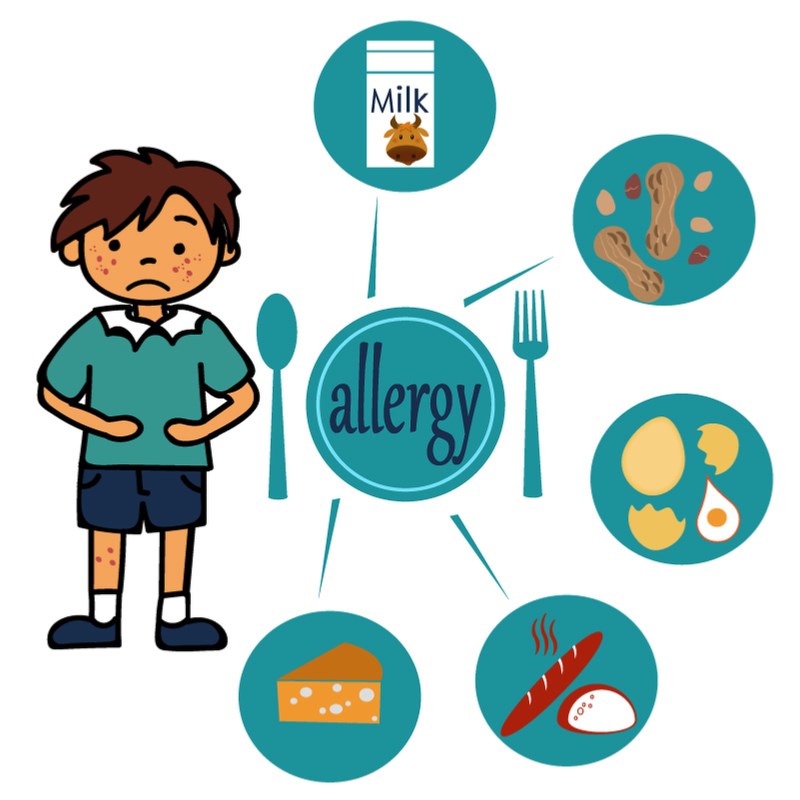Babysitting Children with Food Allergies and Intolerances

5-8% of UK children have a proven food allergy. It’s also believed that around 1 in every 55 children has a peanut allergy. Many other children also have food intolerances. So, whilst rare, it’s possible that you may need to know about food allergies in children if you are a babysitter. Importantly, you need to know the difference between allergies and intolerances, what the child you are babysitting can and can’t eat, and what you should do in the event of a reaction.

Food allergies in children v. food intolerances – what’s the difference?
In common language, allergies and intolerances can be confused. However, there are some distinct differences between allergies and intolerances, and as a babysitter it can be important to understand these.
A food allergy is a fast, and potentially very serious, adverse reaction to a particular food. The immune system goes in to overdrive. Typical symptoms include wheezing, breathlessness, rashes, itching and swelling of the face, mouth, or airways. The most common food allergies in children are: milk; eggs; peanuts; tree nuts; fish, and; shellfish.
A food intolerance on the other hand tends to be a much slower reaction (and therefore can be harder to identify). Intolerances tend to be more common, but are generally less serious. Symptoms of intolerance tend to include gastro problems such as stomach ache, bloating, and diarrhoea.
It’s important to note that children can be both allergic, and intolerant, to different foods. They can also have multiple allergies and intolerances.
What causes a reaction?
Different children have different tolerance levels to their allergen or intolerance. However, all should be treated seriously and the allergen or intolerance should be avoided. Particularly for allergies, some sufferers can suffer an allergic reaction to a miniscule amount of the food. In these instances, parents will keep the home, and the child’s primary environments, completely free of the allergen.

What does an allergic reaction look like in children?
Food allergies in children can be frightening for their caregivers. However, reducing the fear is possible by understanding what an allergic reaction looks like in the child you are caring for, and what you should do.
Typically, an allergic reaction starts with some or all of the following symptoms: itching, red eyes, runny nose, wheezing, coughing, and a red rash or hives. However, it is absolutely essential to know which are the primary symptoms in the child you are caring for. Other early allergic reaction symptoms include vomiting, and swelling of the lips and mouth.
In severe cases, food allergies in children can cause anaphylaxis – a life-threatening condition. Symptoms of anaphylaxis can look like the above allergic symptoms but may also include light-headedness, trouble breathing, confusion, and collapse.
What to do when caring for a child with a food allergy or intolerance?
It can be worrying caring for a child with a known food allergy or intolerance. However, before you are left in sole charge the parents should fully brief you on the child’s allergies and intolerances, and importantly, what you should do if they have a reaction. You can request written information, which parents of children with food allergies will normally be ready to share with you anyway. You should be told what the child’s most common allergic symptoms are and how to recognise an allergic reaction. Additionally, you should be shown where any necessary medicines are located, such as inhalers, anti-histamines, and epipens.
As a babysitter, you will be caring for the child within their home, or within a hotel room. Both environments are very low-risk for a child encountering their allergen. However, knowing what to do if the child becomes unwell is essential.
What to do if the child you are caring for has an allergic reaction?
Importantly, do not panic. Stay calm and focused. Follow the information given to you by the parents regarding allergic reactions in their child. For mild allergies, this may be watchful waiting, or you may need to know how to administer an asthma inhaler, or, in extreme examples, an epipen.
Allergic responses usually require fast action to minimise their impact. Once the initial danger has passed you should of course contact the parent, and continue to follow their usual procedure for allergy attacks.
Allergic reactions that can be fatal are extremely rarely. Be prepared, avoid allergens where possible, and always stay calm.
We believe your little ones deserve the very best care. That's why our local network of babysitters are personally checked and picked by our family for your family www.sitters.co.uk.
